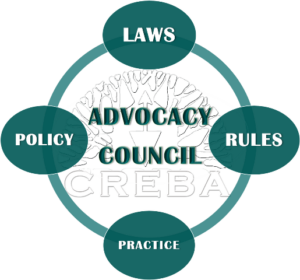It has been said that the avowed purpose of the proposed National Land Use Act (NLUA) is to institute a “framework for allocating scarce land resources to meet the requirements of a growing population not just for food, but also for housing, employment, and the need to protect the environment.”
It has been termed as “rational”, “holistic”, “equitable” and “harmonized”.
This may be true with respect to the provisions relating to forest lands, other natural resources and environmentally critical areas – which would make for a truly good law worthy of support by all sectors including this Chamber.
With respect to agricultural lands, however, the inescapable conclusion would be that the NLUA is being covertly used as a vehicle to unduly favor the agrarian sector at the expense of the rest of the citizenry.
This intent is apparent from the following provisions, among others:
- A policy statement to accord highest priority to the completion of the CARP;
- A categorical ban or otherwise restrictions on the conversion and reclassification of practically all agricultural lands;
- Allowing agricultural land use conversion only after the land is awarded to agrarian reform beneficiaries;
- Conferring upon the DAR – an agency whose stakeholders are only those in the agrarian sector – almost unlimited dominion over all agricultural lands; and
- Emasculating LGUs by unduly restricting their power to reclassify agricultural lands.
Since the NLUA was first proposed in 1999, this Chamber has been battling to have those provisions tempered.
Yet, despite the recommendations of the Senate Economic Planning Office (SEPO) in 2014 along the lines advocated by CREBA, those objectionable features remain unchanged in the iterations of the NLUA Bills in the 19th Congress.
CREBA fully supports protection of prime agricultural lands
At the very outset, CREBA has made it clear that in the interest of food security it supports the protection and preservation of prime agricultural lands, just as in the interest of maintaining ecological balance it supports the protection and preservation of the country’s inalienable lands and natural resources.
That said, the question remains: what lands will there be left for the NLUA framework to allocate, when the proposed enactment itself already makes the allocation – by banning or otherwise restricting the conversion and reclassification of all other agricultural lands?
“Agricultural land”: only for agriculture?
We emphasize that “agricultural land” is a generic term used in our Constitution to designate those lands that are alienable, from those that are inalienable – i.e. forest or timber, mineral lands and national parks.
In other words, under the Constitution, “agricultural lands” are the only lands that may be subject of private titling and development for agricultural, industrial, residential, commercial, infrastructure and other economic purposes.
By banning agricultural land conversion, the proposed NLUA is in effect saying that “agricultural lands” shall be used ONLY for purely agricultural purposes.
In effect, contrary to what the NLUA is supposed to achieve, it will deny society the land resources indispensable for other basic needs such as shelter, clothing, employment, education and the fulfillment of other legitimate human aspirations.
The need for conversion ban: fact or fallacy?
The NLUA proponents and supporters have been claiming that the indiscriminate conversion of agricultural lands has been threatening food security by considerably reducing the acreage available for agricultural production.
Government’s own statistics prove otherwise.
The undeniable truth – as shown by the government’s own maps scientifically processed from satellite imagery – is that despite population growth and non-agricultural land development activity during the past century, total built-up area as of year 2010 is only 2.26% of the country’s total land area, while areas devoted to agriculture comprise 42.72%.
From year 2003 to year 2010, considered the peak of land development activities, areas devoted to agriculture actually increased by 5.39%.
Furthermore, our legislators are no doubt aware that large farm acreage does not necessarily mean higher levels of productivity. For instance, tiny Israel – more than half of whose total land area is desert – is a leading exporter of agricultural produce.
Clearly, therefore, the conversion/reclassification ban is NOT intended purely to enhance productivity toward food security.
If it were, then the conversion ban would be made to apply regardless of ownership. As it is, conversion is banned prior to award of the land to ARBs, but allowed after the award.
The favorite whipping boy
It has been claimed that the outright ban on conversion and reclassification of agricultural lands under the NLUA would temper the alleged greed of developers in the indiscriminate conversion of agricultural lands.
It is disheartening that the private land sector has always been the government’s scapegoat for all its failings, blamed as the cause of all the hunger, poverty and even the ravages wrought by natural calamities.
In truth, however, the land development sector has never been the culprit. The law itself allows agrarian reform beneficiaries to apply for conversion of their awarded lands; conversion of agricultural lands is not possible without the DAR’s approval; development projects cannot possibly commence without permits and clearances from some twenty-three other government offices.
With the NLUA in its present form, Congress would be penalizing the entire economy for the government’s own mistakes.
Good or bad – can the NLUA be better?
Contrary to what other stakeholders may think, this Chamber has been advocating a NLUA that is fair and just – one that could finally lift the entire country out of its perennial state of underdevelopment and poverty.
Yet with all those biases and unfounded presumptions embodied in the proposed law, we ask the question: overall, will the NLUA – as it now stands – be a good, or bad, piece of legislation?
The answer, perhaps, is that it can be much better. Toward that end, this Chamber has formulated amended provisions that we hope our legislators – after more than 2 decades – would finally see fit to accept.




